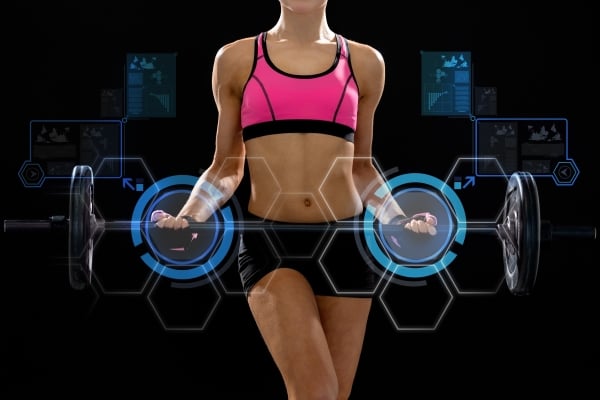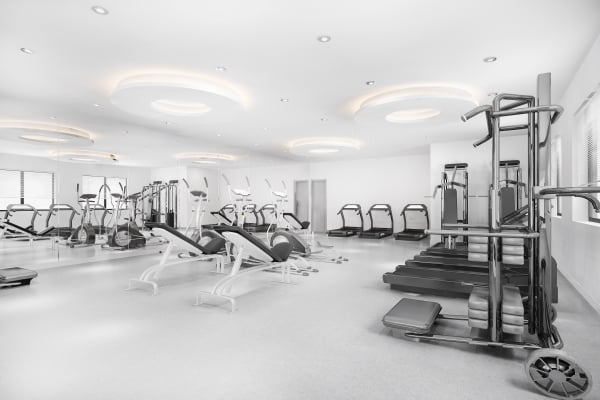As an athletic trainer, you are on the front lines of injury prevention and care, so it's no surprise they are always looking for ways to improve their craft.
Sports technology has played an increasingly important role in athletic training in recent years, from simple innovations like GPS tracking devices to cutting-edge therapies like virtual reality.
Today’s athletes are more connected than ever before. Smartphones and other mobile devices have opened up a new world of sports training programs for athletes of all ages.
Rather than leaving practice sessions to chance, today’s high-tech environment allows trainers to document and track the performance of their athletes with a degree of precision that was impossible in earlier generations.
The adoption of mobile technology has also made it easier for amateur and professional athletes to stay in shape when not training directly with their team or coach.
Revolutionizing sports training is something that technology does best, and it’s clear that the world of athletic training is only going to become more high-tech in the years to come.
In this article, we look at how technology is changing athletic training by introducing new tools, software, and services that can help both trainers and trainees operate more efficiently.
Establishing A Culture Of Data-Driven Coaching
At the core of any technology-driven training, culture is a coach willing and able to leverage data as a tool for improved performance. The best way to do this is to create a culture where data is not just collected but also shared and discussed.
Trainers and coaches serious about leveraging data in their work will typically use several different training management software to track the athlete's performance.
The most common way to do this is through wearable devices such as heart rate monitors, GPS trackers, accelerometers, and sports watches. The specific types of data collected by these devices will depend on the nature of the particular sport.
For example, heart rate monitors will be used for training and monitoring in most aerobic sports such as basketball, football, soccer, and cross-country running. A GPS tracker will be used for sports such as baseball, basketball, and soccer to track speed and distance traveled.
Big Data And Automated Data Analysis
Big data tools and services can help coaches and trainers organize and make sense of their athletes’ training data.
For example, a training app might allow athletes and coaches to enter the type of training they are doing, how much effort they are putting into the training, their body's healing response, and the time of day the training takes place.
The data generated from these training apps can also be stored and analyzed using big data tools. This data can be used to identify patterns such as an athlete’s typical training schedule or the types of training they are doing the most often.
This information can then be used to help coaches and athletes plan future training sessions.
Tracking Tools For Monitoring Athletic Performance
Athletic trainers and coaches use various tracking tools to monitor the performance of their athletes. Here are some of the tracking tools that are used in athletic training:
Heart Rate Monitors
Heart rate monitors are wearable devices that measure your heart rate, along with several other indicators, such as the amount of effort you’re putting into your training session.
This data can help optimize the training process and give a better picture of the athlete's overall health. When training at high intensity, an athlete’s heart rate will typically be 80-90% of their maximum heart rate.
Heart rate monitors can help trainees stay within this range depending on their specific goals, especially when doing an extremely technical sport.
For example, a trainee trying to build endurance could use their heart rate monitor to keep their heart rate between 65-75% of their maximum heart rate to continue to build endurance.
GPS Trackers
GPS trackers track athletic performance data such as speed, distance, and location. This information can then be used to help athletes and coaches improve training methods regarding factors such as speed, distance, and location.
This can be helpful for any sport that involves moving from one place to another, such as soccer, football, baseball, and tennis.
One of the most popular tools in athletic training is the GPS tracking device. By measuring speed, distance, and heart rate, these devices can give trainers a clear picture of an athlete's level of exertion during a workout or practice. This can be used to tailor workouts and prevent overtraining.
Accelerometers
Accelerometers track data about the intensity and frequency of movements during training sessions. This is especially helpful for endurance sports such as basketball, soccer, and tennis, where the intensity of the activity will vary depending on the phase of the game.
Athletes can wear accelerometers as a wristband and clip them to their shoelaces, pockets, or other clothing parts. Accelerometers can be programmed to record data such as the number of times an athlete changes directions, the number of jumps, and the speed of their movements. These pieces of data can be used to help athletes and coaches optimize their training methods.
Environment Tracking
To achieve a gold medal performance, athletes need to be able to train in the right environment. This means having access to the right equipment and being able to control the variables in their environment.
Athletic training equipment such as weights and balls can be equipped with tracking devices that can provide data to improve performance on such things as the speed of a weightlifting lift or the spin rate and speed on a tennis or soccer ball.
This data can provide insights into the performance of a training session and help athletes and coaches improve their training methods and achieve injury-free athletics.
Athletic environments can also be equipped with tracking devices to provide data on factors such as temperature and humidity, the amount of light in a specific location, and the noise level. This magnifies performance-related actions and can provide a competitive advantage.
This data can be used to help optimize athletic training sessions by regulating temperature and light levels, ensuring that there is enough sound to communicate effectively during practice.
Smart Equipment For Athletic Training
Electronic devices that monitor and record data about training sessions are becoming increasingly common in athletic training and coaching.
For example, a virtual reality device that simulates game conditions can be used to train basketball players, soccer players, and other athletes who compete in team sports.
This type of virtual reality training can be programmed to control the intensity of the simulation, enabling athletes to train with the same level of intensity and pressure as a real game. This can be particularly helpful for team sports, where team members must be able to communicate effectively and make quick decisions.
VR training can also help team members or your fitness pal practice focusing on positive mental skills such as staying calm under pressure and visualizing a successful outcome.
Smart Clothing
Smart clothing is a type of wearable technology that is designed to be worn during athletic training or competition. Smart clothing can be equipped with sensors that track heart rate, respiration, and perspiration data.
This data can be used to help optimize training sessions and prevent overtraining. Smart clothing can also be equipped with GPS tracking, which can be used to track an athlete's movements during a training session or race.
Smart Watches And Fitness Trackers
Smartwatches and fitness trackers are wearable devices that can be used to help athletes monitor their personal digital health and fitness levels. This can be helpful for athletes who are looking to improve their performance or recover from an injury.
Fitness trackers can be used to help athletes monitor things such as their heart rate, blood pressure, calories burned, and sleep quality. This data can help athletes optimize their health and fitness levels and maximize their athletic performance. Smartwatches can also help athletes monitor their health and fitness levels.
For example, many smartwatches come with a built-in pulse oximeter. This sensor can be used to help athletes monitor their blood oxygen levels. This can be helpful for athletes who suffer from conditions such as asthma.
3D Body Scanning
3D body scanning is a type of technology that can be used to create a three-dimensional image of an athlete's body. This data can be used to help optimize training programs and prevent injuries.
This data can be used to help improve the efficiency of training programs by identifying areas of the body that are most likely to be injured.
Sports Medicine
Technology is also changing the field of sports medicine. For example, wearable devices that track data about an athlete's health can be used to prevent injuries. These devices can be worn during training sessions and games to monitor heart rate, respiration, and body temperature data.
Virtual Reality
Another promising area of technological innovation in athletic training is virtual reality. This technology is being used to create immersive, simulated environments that can be used for things like rehabilitation and injury prevention.
For example, a virtual reality system could be used to help an athlete regain confidence after an ACL injury by simulating game-like situations.
Therapeutic Lasers
Lasers are another tool that athletic trainers are beginning to use more frequently. Low-level lasers (also known as cold lasers) are thought to promote healing by increasing blood flow and reducing inflammation. These devices are becoming increasingly portable and affordable, making them a viable option for many trainers.
Summing Up
Technology is changing the landscape of athletic training. New devices and apps are being developed all the time, each with the potential to revolutionize the way athletes train.
As you can see, technology is changing athletic training in various ways. From GPS tracking devices to therapeutic lasers, these innovations make it easier for trainers to keep their athletes healthy and perform at their best.







